There is something inherently liberating about photographing butterflies with a minimum of gear. As they flit about I can easily follow them without being bogged down by a ton of gear.
Being able to stick a camera body, one lens, and a small set of extension tubes in a cargo pants’ pocket is about as ‘bare bones’ as I get when it comes to gear. This article highlights a selection of butterfly images captured with a Nikon 1 J5, 1 Nikon 30-11 0 mm f/3.8-5.6 zoom lens, and a couple of MOVO extension tubes.
NOTE: Click on images to enlarge.
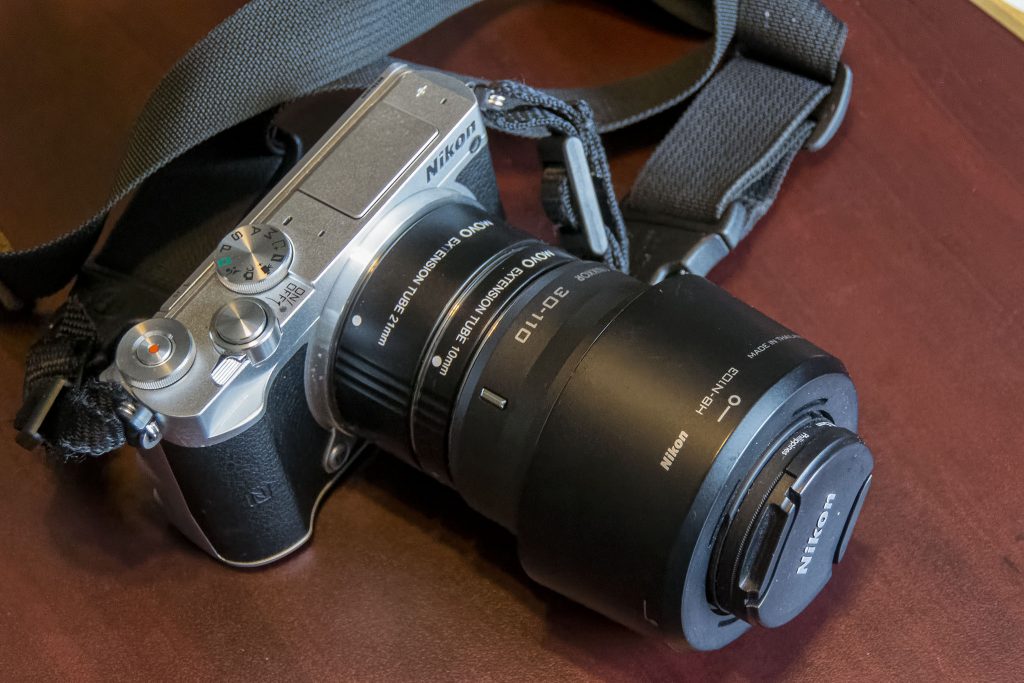
There are, of course, trade-offs when using a smaller, lighter camera system like Nikon 1 that utilize smaller-sized sensors. The new 20.8 MP BSI 1″ sensor in the J5 is a marked improvement over the Aptina sensors in previous Nikon 1 models but physics being as they are a small sensor can only do so much.

Sensor performance in terms of dynamic range and colour depth lags behind APS-C and full frame cameras and low light performance would certainly not be considered a strength.

In return for those shortcomings there is the freedom that comes from using a smaller, lighter, and much simpler system.
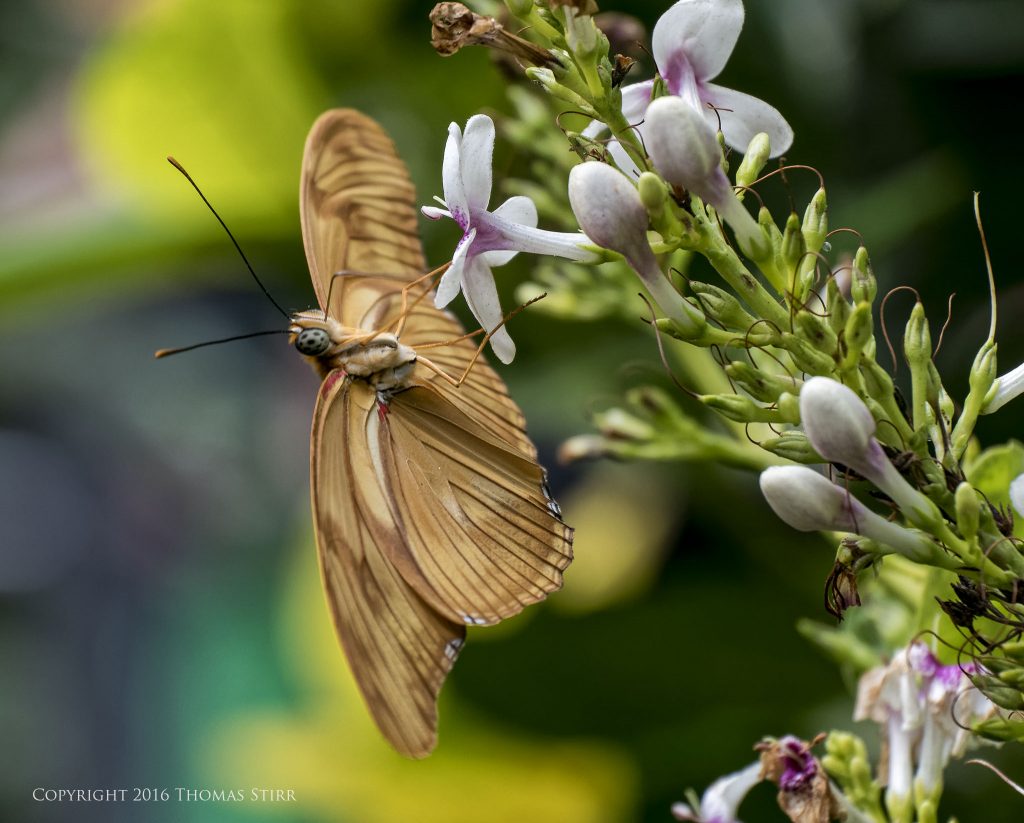
When photographing butterflies I typically use Manual settings and Auto-ISO 160-3200. This allows the ISO to ‘float’ to acquire proper exposure, while allowing me the freedom to adjust shutter speed and aperture as needed.

I almost always shoot my Nikon 1 gear using single point auto-focus. My J5s or V2s allow me to position that single AF point virtually anywhere in the frame. When I see a potential image I typically preset my single AF point even before I look through the viewfinder of my V2s or at the rear screen of my J5s.

Depending on the subject butterfly and its position relative to me I typically place the single AF point on its head, or more specifically, on one of its bulbous eyes. Some species of butterflies tend to be quite docile and stationary, while others are fidgety. This can necessitate some adjustments to shutter speed.

I typically shoot my Nikon 1 gear at f/5.6 but lately I have been pushing that a bit to f/8 or so when I need a bit more depth of field. There is some risk of diffraction when moving to that aperture with a smaller sensor camera.
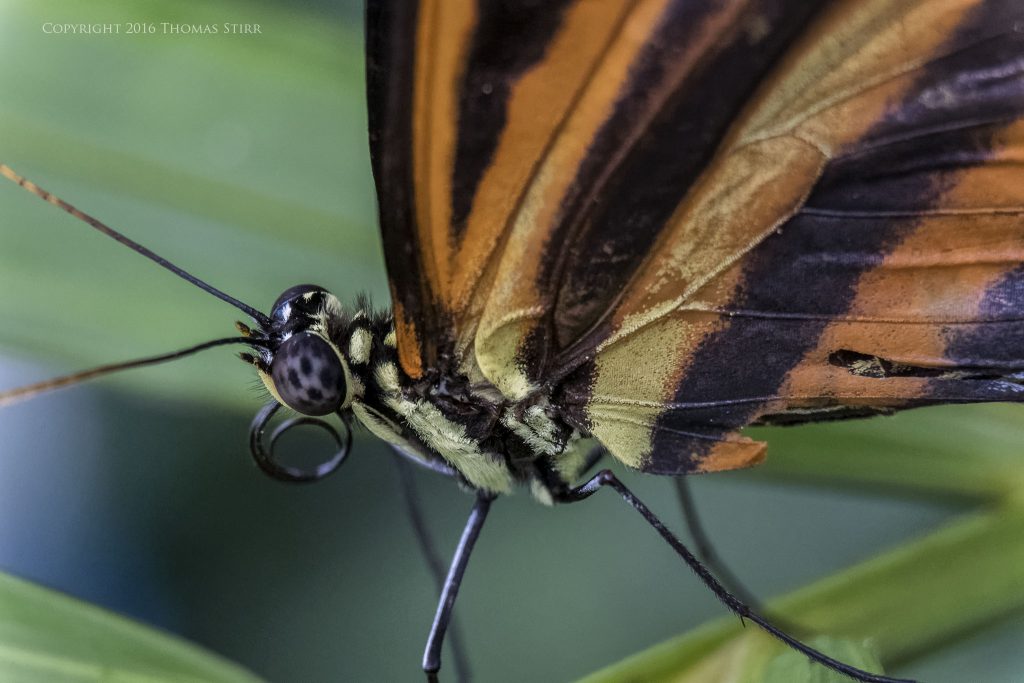
Regardless of the camera used, one of the most important factors is to chose appropriate image subjects from the hundreds of butterflies fluttering about in a facility like the Niagara Butterfly Conservatory. I look for decent separation from the background and whenever possible try to find subjects that are perched in more open areas so I can easily adjust my shooting angle.

I also tend to avoid areas of the facility that are subject to strong air currents from the internal heating/cooling system as they can cause too much subject movement or agitation of surrounding foliage. Another factor to consider when photographing butterflies in this type of facility is the width of the aisles.

If the aisles are narrow bringing a zoom lens that has a long minimum focusing distance will be problematic. A zoom like the Nikkor 200 mm-500 mm has a minimum focusing distance of 2.2 meters, or about 7.2 feet. Given the narrow aisles at the Niagara Butterfly Conservatory a lens like the 200 mm-500 mm would be pretty much useless.

The minimum focusing distance of my 1 Nikon 30-110 mm is about 1 meter (3.3 feet). This lens gives me an equivalent field of view of 81 mm to 297 mm. This comparatively short minimum focusing distance is well suited to the narrow aisles at the Niagara Butterfly Conservatory.
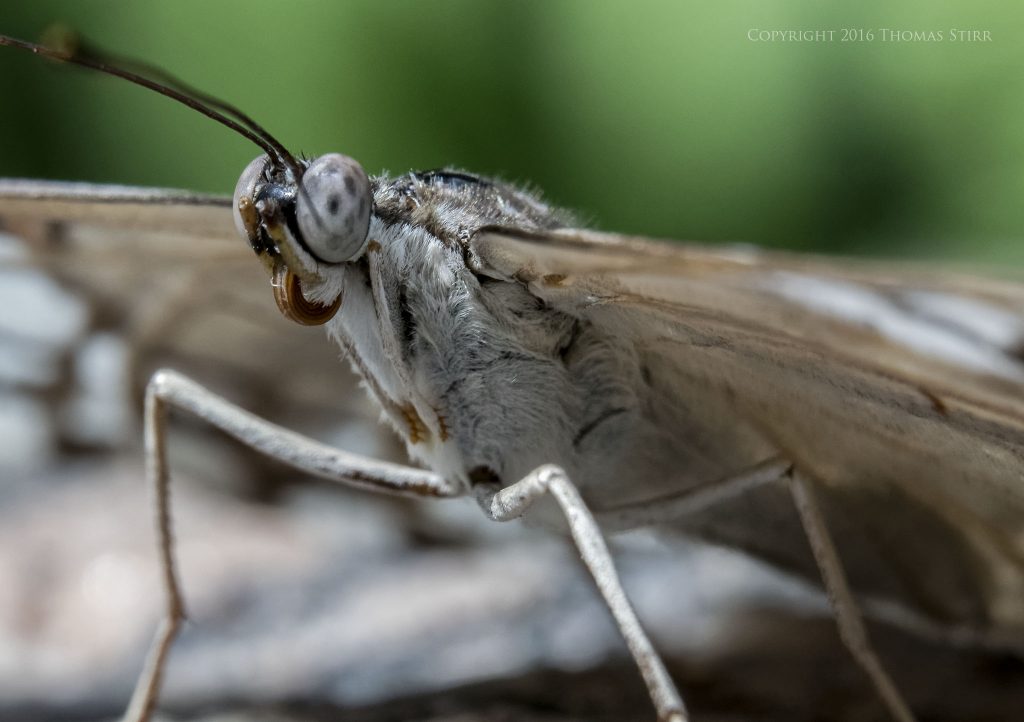
By comparison an F-mount full frame Nikkor 70-300 f/4.5-5.6 has a minimum focusing distance of 1.5 meters (4.9 feet) and my 1 Nikon CX 70-300 when fully extended has a minimum focusing distance of 1.6 meters or 5.2 feet. The differences in minimum focusing distances between these three lenses may not sound like much but when shooting in tight aisles having a shorter minimum focusing distance is definitely preferred.
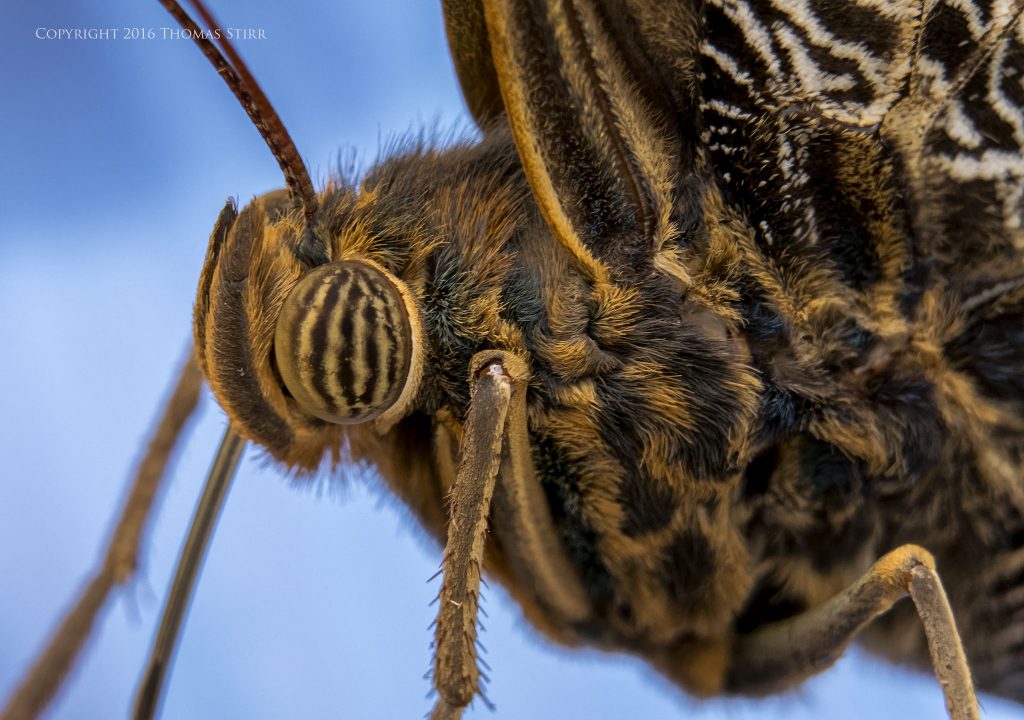
Photographers who like using extension tubes will have their own preferred lenses and technique. I have never liked using prime lenses with extension tubes, and I have always preferred to shoot hand-held. It comes as no surprise then that my favourite 1 Nikon lens to use with extension tubes is the 30-110 mm f/3.8-5.6 zoom.

Using extension tubes comes with a penalty of losing light. I often will change extension tubes to get the degree of magnification effect desired while still trying to maintain as much light as possible.

Since I was out for some casual butterfly photography in terms of this article, I stacked the 21 mm and 10 mm MOVO tubes for many of the images in this posting and did my best to deal with high ISO noise in post.

While you can certainly use more sophisticated and higher quality gear than I did to photograph butterflies, it is possible to have a lot of fun and capture some decent images with a minimum of gear.

Technical Note:
All images in this article were captured hand-held in available light using a Nikon 1 J5, 1 Nikon 30-110 mm f/3.8-5.6 lens, and MOVO extension tubes as noted in EXIF data. All photographs in this article were produced from RAW files using my standard process of DxO OpticsPro 11, CS6 and Nik Suite.
If you enjoyed this article and would like to learn more about the Nikon 1 system, you may want to have a look at our eBook, The Little Camera That Could. It illustrates the capability of the Nikon 1 system through hundreds of original photographs. There is also commentary and tips about the Nikon 1 system. The cost is $9.99 Canadian.

My intent is to keep this photography blog advertising free. If you enjoyed this article and/or my website and would like to make a modest $10 donation through PayPal to support my work it would be most appreciated. You can use the Donate button below. Larger donations can be made to tom@tomstirr.com through PayPal.
Article and all images are Copyright 2016 Thomas Stirr. All rights reserved. No use, duplication or adaptation of any kind is allowed without written consent. If you see this article reproduced anywhere else it is an unauthorized and illegal use.



Very nice photos. I know you are taken with the J5 but it is a no go for me. I am old fashioned and only use cameras with viewfinders. Got a great buy on a V3 with viewfinder and it is so fast. I am hoping Nikon still comes out with a viewfinder Nikon 1 or my 2 V2’s, 1 V1 and one V3 will suffice. Nothing against your choice of J5, just not my cup of tea. 🙂
Vern
Hi Vern,
I also prefer using cameras with a viewfinder. If there was a Nikon 1 camera that had a viewfinder and the new 20.8MP BSI sensor I would have bought it instead of the J5…but such a camera does not currently exist.
Tom